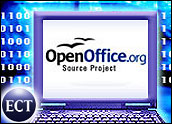
Nokia is getting in the game of open source cell phone software with its newly acquired Symbian platform. Nokia — which had already owned 48 percent of Symbian — bought the remaining 52 percent of the company Tuesday and immediately shifted the product to a royalty-free model.
Several leading cell phone providers have already signed on to form the Symbian Foundation and support the single platform. AT&T, LG Electronics, Motorola, NTT DoCoMo, Samsung Electronics, Sony Ericsson, STMicroelectronics, Texas Instruments and Vodafone are all now on board.
Carrier Competition
The focus on open source highlights a growing industry trend away from the closed systems that have traditionally dominated the market. The LiMo Foundation has been developing its Linux-based open source system since 2007, and Google’s Android platform is scheduled to see its first releases later this year — though reports this week indicate the launch may be behind schedule, with some providers being pushed back to 2009.
The potential delay, combined with the sudden surge in interest in Symbian, may spell bad news for Google when it comes to the open source market.
“Google and LiMo [are] going to struggle in redefining [their] competitive advantages,” Bonny Joy, wireless analyst with Strategy Analytics, told LinuxInsider. “Symbian is already in use with some of the major converged media products … while the first Android product is yet to hit the market — and the team is already plagued with launch delays.”
Google continues to insist its Android development is on track. As for LiMo, executives aren’t worried; in fact, they see the news as a positive step for the industry.
“It further validates our vision and the importance of openness,” LiMo Foundation Director of Global Marketing Andrew Shikiar told LinuxInsider. “I think it will help us from a market standpoint.”
Closed Source Considerations
Internal competition aside, the real question may be how well the open source devices can compete with tech giants like Apple’s iPhone — a product showing no signs of abandoning its closed configuration.
“It’s a big market. If one wants to push forth a closed operating system, they can certainly make a fine market share,” Shikiar said.
Apple’s focus on design and style may be the key to keeping its stronghold.
“The iPhone is a beautiful device — really what distinguishes it is design. The technology inside the device is not earth-shattering by any means, even in the new device,” Shikiar commented.
Microsoft, however, may see more of a direct impact from the increasing open source interest.
“For Microsoft, the pressure will surely mount to cut the price of its license fees to handset vendors,” Joy predicted.
Future Challenges
Open source developers remain optimistic users will veer toward their products once they experience the flexibility they provide.
“Openness will allow more choice and allow a richer experience,” LiMo’s Shikiar said. “They will have devices where they can download applications [and] view a variety of content from multiple sources. There will be less constraint by traditional impediments, either with their device or through their operator.”
Regardless of how Symbian affects the market, early pioneers like LiMo and Google get credit for helping bring the idea of openness to the mobile world.
“In the past, the drawback has been the lack of direct ownership in software and business needs,” Joy explained. “But with the entry of Web 2.0 players and foundations such as the LiMo Foundation, open source has gained considerable momentum and could one day challenge the dominance of traditional players.”
Only time will tell how the various platforms will fare. Industry leaders hope, however, that the concept of choice will drive the open source option to eventual dominance.
“I think openness is the inevitable course,” Shikiar noted. “If you look at some of the requirements that are being driven by consumers, [it’s] really the only answer.”

















































